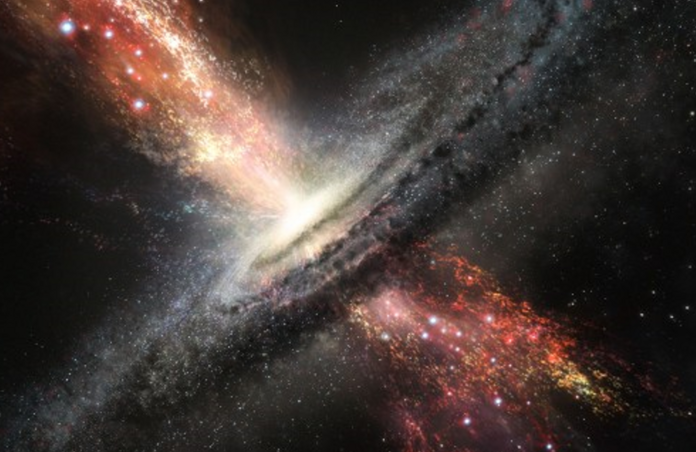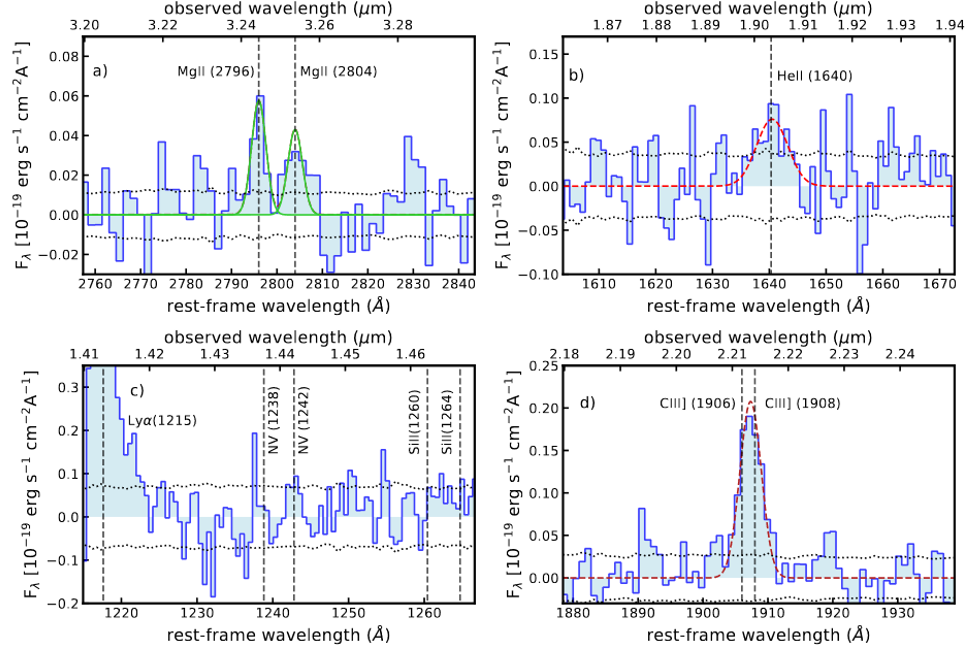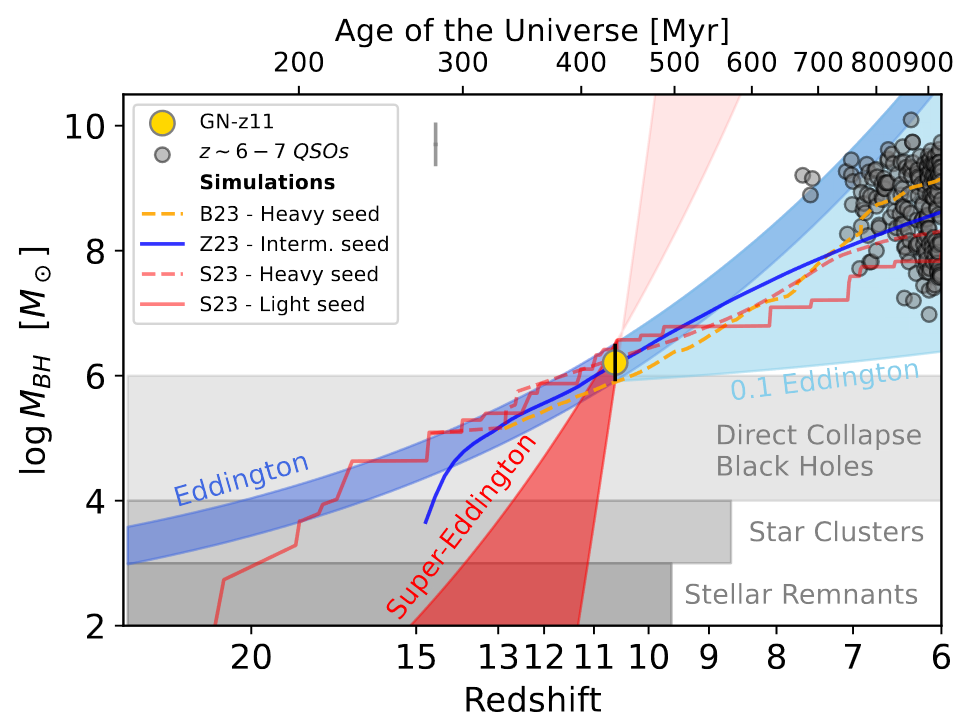Oldest Primordial Black Hole found to be Growing Faster than Believed Feasible

Theories about the first black holes suggest they formed shortly after the Big Bang, either as "heavy seeds" born from the direct collapse of massive gas clouds or as smaller "light seeds" from the remnants of early stars, later growing rapidly through accretion and/or mergers. These are thought to have first originated when the universe was merely 200 million years old. Understanding these early black holes is vital as they are thought to be the precursors of the supermassive black holes found at the centres of most large galaxies, including our own Milky Way. They also play a key role in shaping their host galaxies and influencing the distribution of matter in the universe.
A recent study led by Roberto Maiolino investigates a series of spectra taken using the James Webb Space Telescope's Near Infrared Spectrograph (JWST-NIRSpec), featuring an unanticipated excess of highly luminous galaxies seen at extremely high redshifts. Their investigation concerns GN-z11, one such galaxy with an active galactic nucleus. The target is located at a redshift of Z = 10.6, only 400 million years after the Big Bang, and the oldest concretely identified supermassive black hole, and represents the most luminous object observed at Z > 10.
The team leveraged the use of Gaussian fitting techniques to locate lines within the spectrum of GN-z11, identifying two emission lines arising due to forbidden transitions, [Ne IV]λ2423 and [C II] λ1335. Further density tracers, such as [N IV]λ1483 and N IV]λ1486, are used to reveal gas densities in excess of 109 cm-3. These are characteristic of AGN environments, more specifically hosting an accreting black hole. Finally, they attribute the blueshifting of the C IVλ1549 absorption line to a Doppler shift, arising as a result of the outflow of the ejecta, travelling at ~1000 kms-1.

The mass of the black hole was estimated to using virial models, linking the mass to the broadening of features and its luminosity. They present a mass of log(M/M☉) = 1.53 ± 0.3, or around 1.5×106 M☉. As mentioned, such a massive black hole had yet to be identified so early in our universe’s history. Assuming current light seed models, such a colossal black hole should not yet have formed, as accretion limits dictate it would require at the very least ~109 years to do so, starting from a stellar mass. However, this begs the question whether black holes are able to accrete mass at super-Eddington rates.

Indeed, further investigation of the GN-z11 revealed that its accretion rate was far greater than theoretical limits outlined by the Eddington model, exceeding it five-fold. The accretion rate is estimated based on the ratio between the Eddington luminosity and the black hole’s bolometric luminosity. This was found by analysing continuum emission of the spectrum at ~1400A, inferring an emission rate of 1.08×1045 erg s-1. This was 5.5 times greater than the Eddington luminosity, suggesting a similar relationship for the accretion rate.
The study concludes that the characteristics of the black hole in GN-z11 can be boiled down to two main scenarios: either the black hole is a heavy seed growing at sub-Eddington rates, or it is an intermediate/light seed that experiences phases of super-Eddington accretion. The research emphasises the necessity for more data on similar objects to effectively distinguish between these scenarios. It is noted that existing models and simulations anticipated the identification of a few accreting black holes with masses in the range of 106−107 M⊙ at 10<Z<11 in the JADES Medium-Deep survey. Therefore, the unearthing of the SMBH in GN-z11 aligns with these predictions, suggesting that additional discoveries, possibly accreting at lower rates, might be found in similar fields.
--
Journal Source: R. Maiolino et al, A small and vigorous black hole in the early Universe, Nature, 2024, https://doi.org/10.48550/arxiv.2305.12492
Cover Image: ESO/M. Kornmesser
